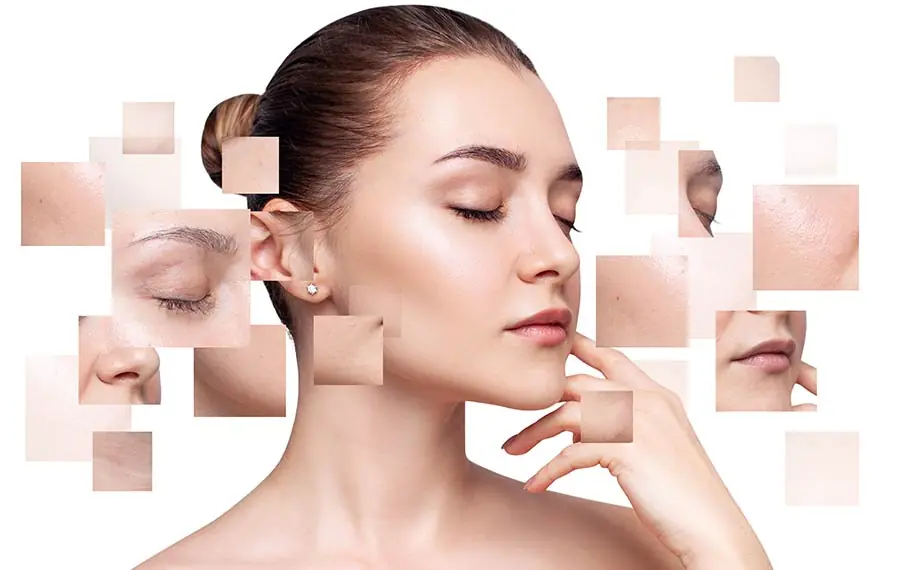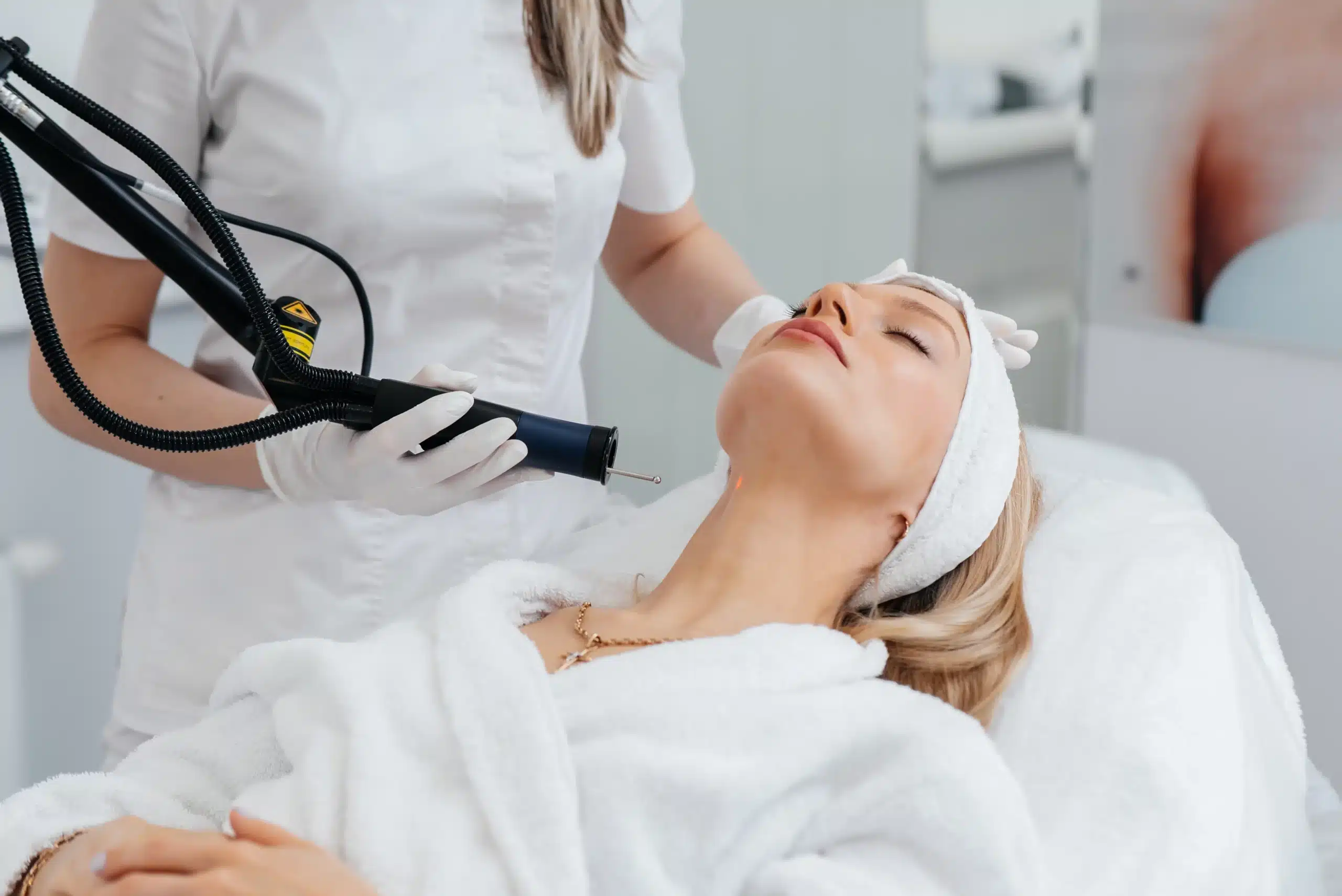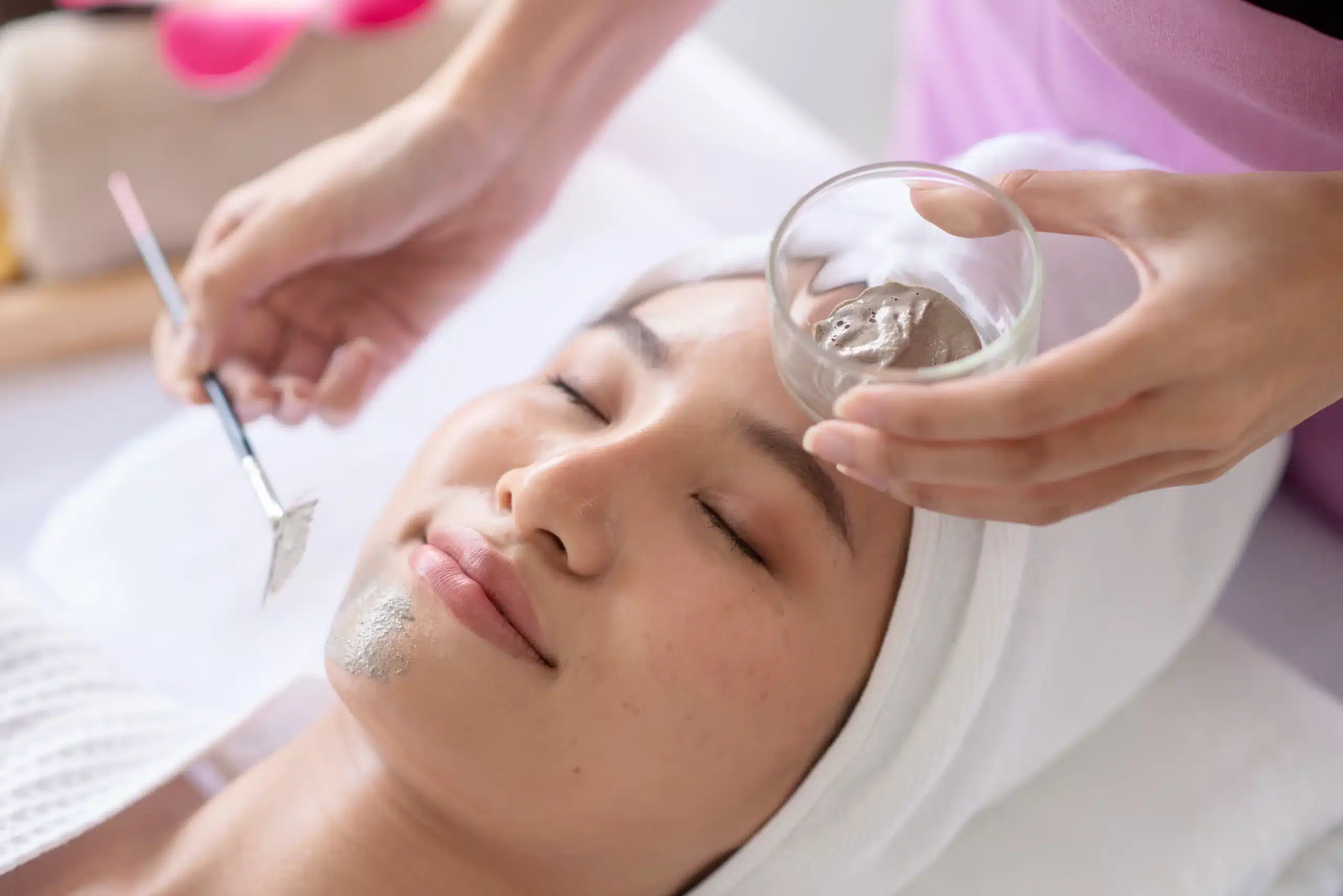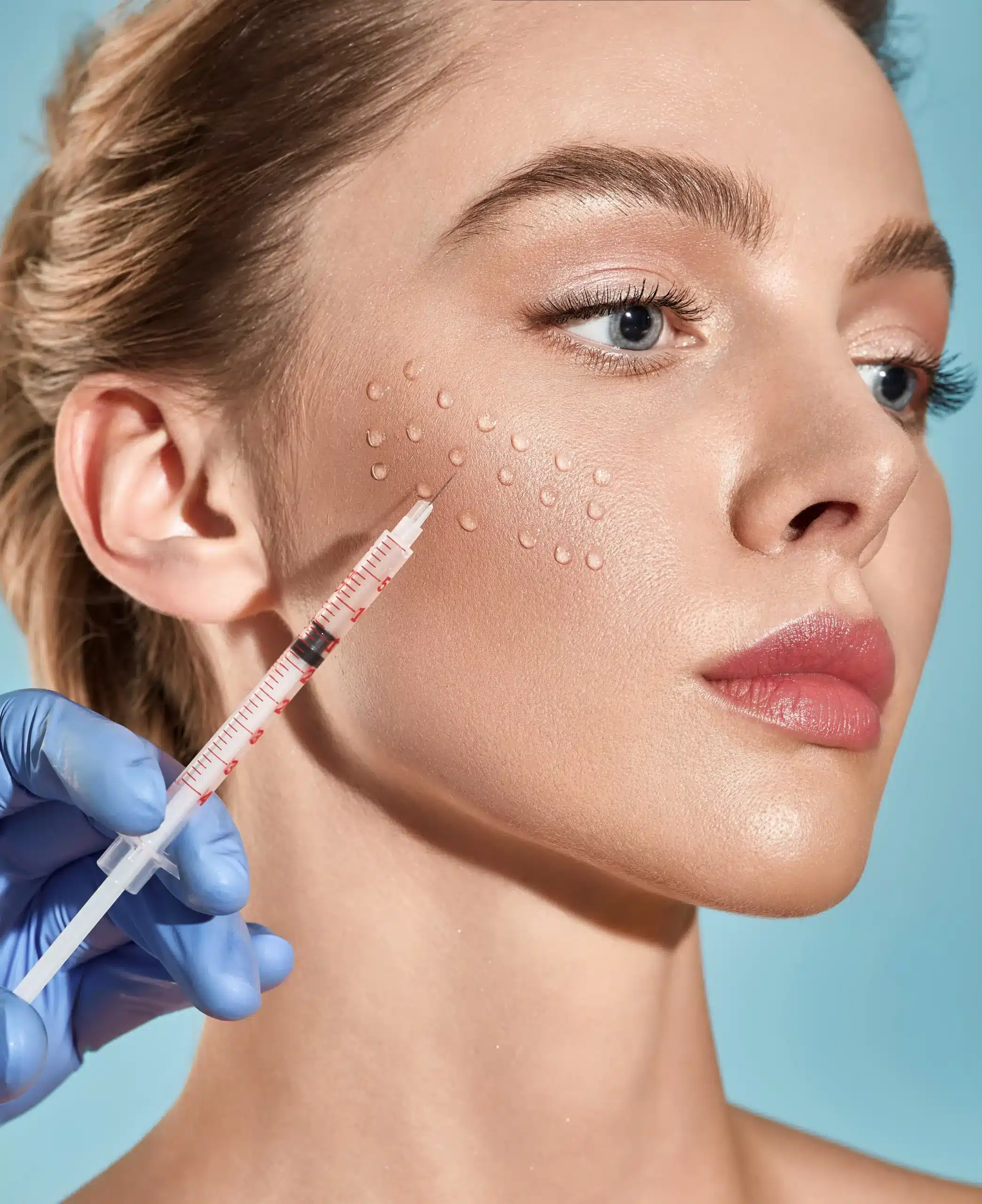Home » Conditions » Skin & hair » Melasma
Melasma, also known as chloasma, is a chronic skin pigmentation that affects women (less often men) with rather medium to dark phototypes (phototypes III to VI).
It is called pregnancy mask when it appears during pregnancy. It forms a kind of mask on the face, hence the name, because it appears on the forehead, chin, bridge of the nose and cheeks.
The pigmentation may be more or less dark depending on two factors : the amount of pigment and the depth of the pigment.
There are in fact three types of melasma :
• Epidermal melasma : the pigment is superficial, located in the epidermis. The spots are brown.
• Dermal melasma : the pigment is deep, located in the dermis. The spots are more bluish.
• Dermal-epidermal melasma : the pigment is found in both the dermis and the epidermis. The spots are brown and grey.
It appears following sun exposure (not necessarily repeated) and exposure to oestrogens (pregnancy, contraception, medical conditions…).
What is melasma ? Melasma is a common skin condition that affects millions of people around the world. It is a pigmentation of the skin that occurs after repeated exposure to the sun or to oestrogens. When it occurs during pregnancy it is also called the pregnancy mask.
We do not know why some women develop it and others do
not. Unfortunately, these pigmentations do not disappear naturally, and any sun exposure (or exposure to oestrogens) makes them worse. It is possible to get rid of the pregnancy mask thanks to medical techniques.
Without involving any surgical procedure, treatments to remove melasma in Geneva are performed in the clinic.

Melasma corresponds to an excess of melanin, the natural pigment that determines the colour of our skin, produced by specific cells : melanocytes.
Darker phototypes are the most affected.
It is a chronic hyperpigmentation whose intensity fluctuates. The spot is sometimes lighter and sometimes darker.
Three factors are responsible for its development :
Aggravating factors are :
It is possible to have melasma without being pregnant.
The responsible factors are oestrogens and the sun. Any sun exposure can trigger melasma. A woman may have a higher level of oestrogens without necessarily being pregnant, particularly in cases of certain hormonal conditions or when taking a contraceptive.
Even a pregnancy that had to be interrupted can cause melasma.
Preventing the appearance of a pregnancy mask is particularly difficult, as this would require avoiding any sun exposure as well as any hormonal variation. Yet even brief exposure to the sun can be enough to trigger melasma.
As for hormones, it is possible not to use contraception, but fluctuations in oestrogen levels are not solely linked to pregnancy : they can occur naturally or in other hormonal contexts.
The treatment of melasma is a common request.
Anti-spot creams (apart from magistral preparations prescribed by your doctor) and treatments performed in beauty institutes are not very effective.
There are medical treatments to eliminate melasma and the pregnancy mask.
It is important to understand that these pigmentations are difficult to treat and that recurrences are frequent.

According to the medical literature, the gold-standard treatment is the ablative laser. There are two ablative lasers, erbium and CO₂. Dr. Romano prefers the latter.
The protocol combines two modes : the continuous mode, which treats the entire surface of the spot superficially ; the fractional mode, which targets only part of the area in order to penetrate more deeply into the dermis.
Dr. Romano advises against the use of intense pulsed light or the Q-Switch laser, considered poorly effective and likely to worsen pigmentations. Results obtained with the vascular laser are also modest.

Chemical peels use acids, such as glycolic acid or trichloroacetic acid, to exfoliate the superficial layers of the skin, thereby promoting cell regeneration and the elimination of superficial pigment.
Depigmenting actives, selected according to the patient’s skin, are also included in this treatment ; they dissolve the pigment.
An assessment by an experienced doctor is essential. Indeed, it is not always possible to treat melasma with a peel — it depends on the patient’s skin and the depth of the pigment. Sometimes, the peel can worsen melasma. This is why it is important to consult a doctor who is accustomed to this type of procedure.

The mesotherapy consists in injecting vitamins, antioxidants and depigmenting agents into the superficial layers of the skin. This technique helps reduce pigmentation and revitalise the skin. However, it is mainly used as a complement to the laser or the peel, because on its own its effectiveness remains limited.

For patients who prefer natural options before turning to medical or aesthetic treatments, there are several home remedies that may help reduce melasma pigmentation. Results vary and are not confirmed by scientific studies.
• Aloe vera : aloe vera contains compounds that promote skin regeneration and the reduction of brown spots.
• Turmeric : turmeric, thanks to its main active compound curcumin, is known for its anti-inflammatory and brightening properties. Mix one spoon of turmeric with milk or honey and apply this paste to the skin to reduce pigmentation.
• Green tea : the antioxidants found in green tea help reduce damage caused by free radicals, which are responsible for hyperpigmentation. Use cooled green tea bags.
The results of melasma treatment vary depending on the type of treatment and the severity of the pigmentation, particularly its depth.
Several sessions are required : 3 to 4 laser sessions and 5 to 7 peeling sessions. Annual maintenance sessions are necessary.
Brown spots gradually lighten and the skin regains a more even complexion.
However, it is important to note that melasma is a chronic condition, and preventive measures are essential, particularly the regular use of sunscreen, to avoid recurrence.
The treatment of melasma in Geneva is based on specific aesthetic-oriented protocols, most often combining medical peelings and gentle laser sessions. The price of these treatments starts from 300 CHF per session. This amount may vary depending on the number of areas to be treated, the frequency of the sessions and the complexity of the case. These treatments are carried out with an approach adapted to the particular pigmentary and hormonal nature of melasma.
The patients are often satisfied with the results of melasma treatment, especially when they combine several approaches, such as depigmenting creams and laser treatment. They describe a significant improvement in the uniformity of the complexion and a renewed sense of confidence. The recurrences are frequent.
Melasma can fade with appropriate treatments and proper sun protection, but it is often chronic and prone to recurrence. Dermatological care such as peels, gentle lasers, or depigmenting creams (as complementary options) can significantly reduce the spots. However, a strict skincare routine is essential to prevent them from coming back.
Melasma appears as brown or greyish patches with irregular borders, mainly on the face : the cheeks, the forehead, the nose, and the upper lip. These patches are symmetrical and often develop due to hormones or excessive sun exposure.
Melasma is benign and does not pose any health risk. It is an aesthetic pigmentation disorder, without the danger of serious complications. However, it can affect self-confidence due to its visible impact on the skin.
It is not recommended to be exposed to the sun with melasma, because UV rays stimulate melanin production and make it worse. If exposure is unavoidable, it is crucial to use a broad-spectrum sun protection (SPF 50+) and to wear protective accessories such as hats and sunglasses.
Although natural treatments are less potent than dermatological care, some can help reduce melasma. Regular application of vitamin C, aloe vera or turmeric masks can help even out the complexion. However, sun protection remains the most effective measure to prevent worsening.
Melasma appears mainly on the photo-exposed areas of the face : the cheeks, the forehead, the nose and the upper lip. It can also appear on the neck and forearms, especially in people who are frequently exposed to the sun.